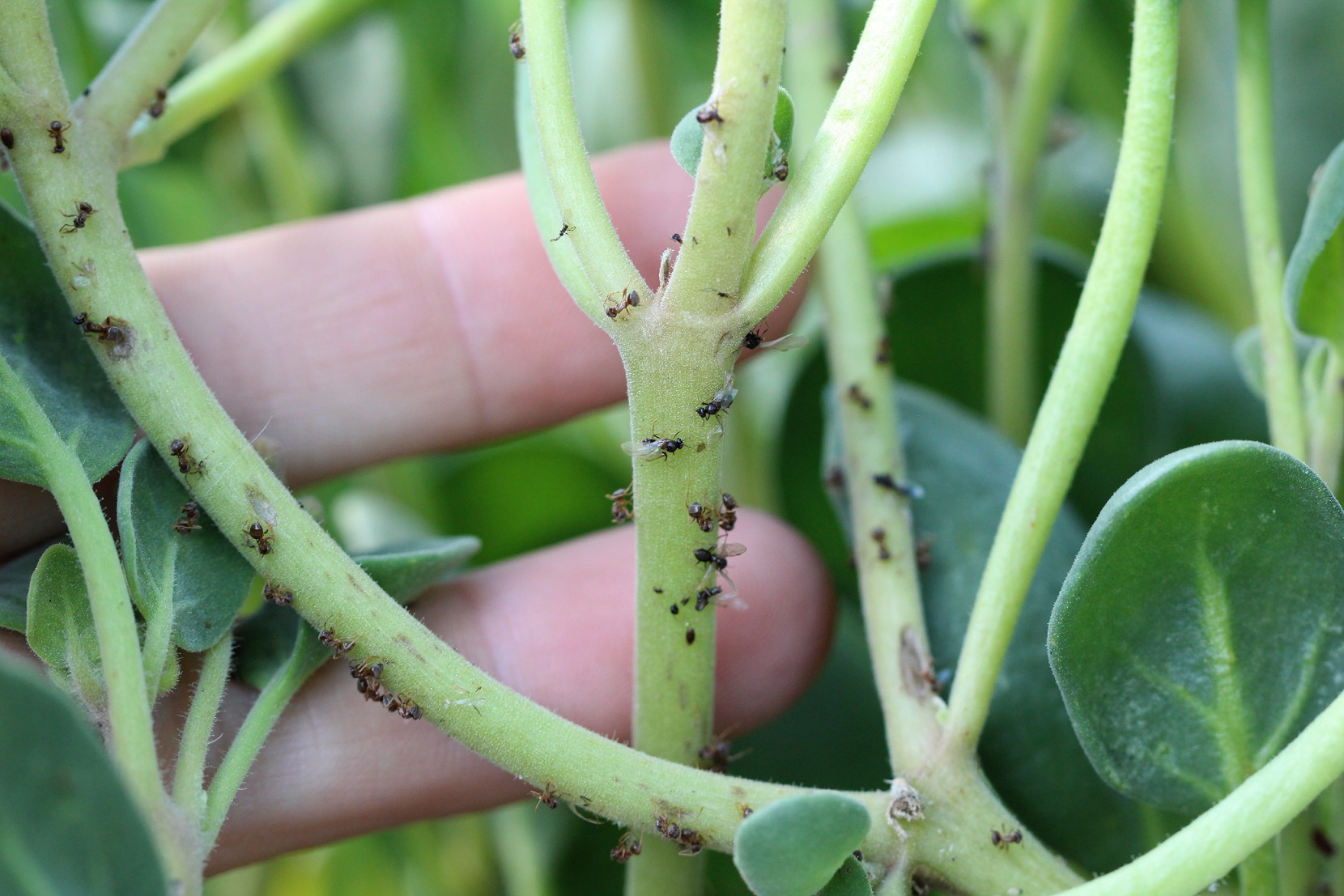Stickiness has evolved many hundreds, maybe thousands, of times during plant evolution. It serves physiological, dispersive, and defensive functions. I study two of the defensive functions: sand entrapment and carrion-mediated protective mutualisms.
 If a sticky plant grows in an area with unstable or wind-blown substrate, it becomes covered in that substrate. This is most commonly sand, as many coastal and desert dune plants are sticky. This may serve a wide variety of functions; Norbert Jurgens laid out a number of hypotheses in a nice paper on this phenomenon/trait, which he terms "psammophory" (i.e. sand carrying). I have been studying the defensive functions. In both inland and coastal sticky plants in California, sand coatings reduced herbivory. When caterpillars were forced to feed on sandy plants, they wore down their mandibles, grew more slowly, and pupated at smaller sizes. Future work will look at trade-offs between this sand defense and other functions, as well as the function of sand defense against diverse herbivore guilds. See LoPresti and Karban 2016 Ecology and LoPresti et al 2018 Ecological Entomology for more information.
If a sticky plant grows in an area with unstable or wind-blown substrate, it becomes covered in that substrate. This is most commonly sand, as many coastal and desert dune plants are sticky. This may serve a wide variety of functions; Norbert Jurgens laid out a number of hypotheses in a nice paper on this phenomenon/trait, which he terms "psammophory" (i.e. sand carrying). I have been studying the defensive functions. In both inland and coastal sticky plants in California, sand coatings reduced herbivory. When caterpillars were forced to feed on sandy plants, they wore down their mandibles, grew more slowly, and pupated at smaller sizes. Future work will look at trade-offs between this sand defense and other functions, as well as the function of sand defense against diverse herbivore guilds. See LoPresti and Karban 2016 Ecology and LoPresti et al 2018 Ecological Entomology for more information.
Sticky plants growing in areas without substrate tend to entrap 10's to 1000's of tiny insects, mostly flies, thrips, and wasps. While a few well-known sticky plants, such as sundews, digest the entrapped insects, most species do not benefit nutritionally. Instead, in a mutualistic interaction first described by Patricia Thomas in 1988 in a sticky thistle, predatory bugs scavenge the dead bugs and reduce herbivory on the plant, either directly by consuming herbivores or simply by being present. We have worked on the intricasies of this interaction in columbines, tarweeds, monkeyflowers, and wild tobacco. Additionally, this interaction has been shown to be important in biocontrol in cultivated tobacco (Pete Nelson's work at NCSU), and future implications of this mutualism in crops are certainly an interesting direction to pursue.

